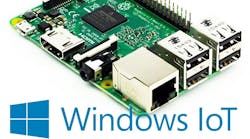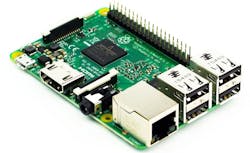You may have seen more of Microsoft’s Windows 10 IoT lately. It started with Windows 10 IoT Core, but has since progressed to include these three platforms:
- Windows 10 IoT Core, which runs Universal Windows Platform (UWP) apps
- Windows 10 IoT Mobile Enterprise, which runs UWP apps
- Windows 10 IoT Enterprise, which runs Windows native and UWPapps
Unlike Windows CE of the past, Windows 10 IoT Core is a subset of Windows 10 that is designed to run Windows Universal applications. It is available as a free download and lacks the usual Windows 10 system user interface. It also runs on x86 and selected ARM platforms like the Raspberry Pi (see photo). Windows IoT Mobile and Enterprise are still licensed to OEMs. Windows 10 IoT Core targets embedded developers and hobbyists.
Windows 10 IoT Mobile Enterprise is built on Windows 10 IoT Core and it is a direct relative of Windows 10 Mobile OS used on Windows Phones. It includes a user interface. It is also designed to run Windows Universal applications and can be used to support mobile enterprise devices ranging from barcode scanners to control pads.
Windows 10 IoT Enterprise is essentially the Windows Embedded OS family that developers and OEMs are familiar with. It is also based on Windows 10 IoT Core, but the Enterprise version runs both desktop and Universal applications.
Windows 10 IoT Enterprise has a five-year life cycle, with five years of extended support. Online activation can be deferred, and it has many embedded enabling features like Unified Write Filter, Embedded Boot Experience and Log-on, and the Windows Shell Launcher. The Mobile Device Management (MDM) software helps with management and remote servicing. The Enterprise version supports the Windows Assessment and Deployment Kit (ADK) and Windows Image Configuration Designer (ICD).
Microsoft Visual Studio can target all three IoT platforms. Visual Studio can generate Windows 10 native x86 applications as well as Universal applications. The latter can be written in C# and Visual Basic.
UWP app supports all Windows security features like Windows Information Protection (WIP) and strong two-factor authentication (2FA). The apps can also utilize SQLite local databases in addition to supporting Entity Framework 7 for UWP.


